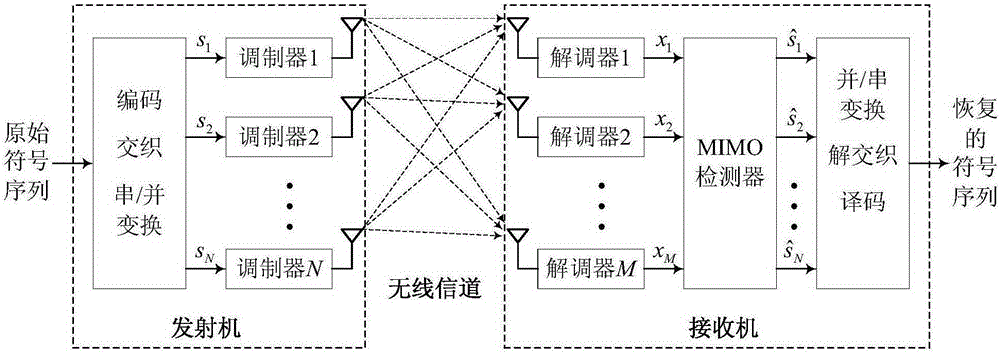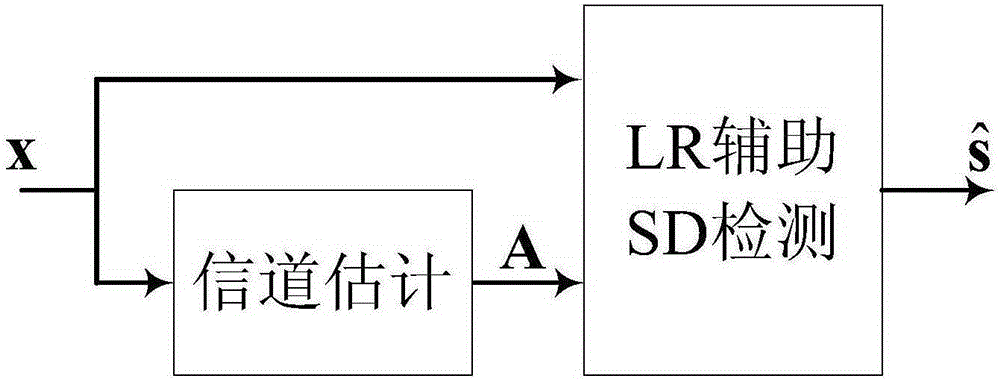Lattice reduction assisted sphere decoding MIMO signal detection method
A technology of spherical decoding and signal detection, applied in the direction of error prevention/detection through diversity reception, space transmission diversity, radio transmission system, etc., which can solve problems such as reduction of computational complexity
- Summary
- Abstract
- Description
- Claims
- Application Information
AI Technical Summary
Problems solved by technology
Method used
Image
Examples
Embodiment 1
[0064] The LR-assisted SDMIMO detection scheme based on ZF detection, that is, ZF-SD-LR, the specific steps are as follows, input: x, A. output:
[0065] 1) Execute the lattice reduction algorithm (such as the LLL algorithm) to obtain the reduced base matrix and the unimodular matrix U, A ~ = A U .
[0066] 2) To reduce the base matrix perform QR decomposition, Obtain the upper triangular matrix R; here, the base matrix can be reduced The column vectors of are reordered according to the V-BLAST detection order, thereby further speeding up the search speed and reducing the complexity.
[0067] 3) Calculate the reduction base matrix Moore-Penrose inverse matrix and find the decision variable vector
[0068] 4) Execute the "preliminary search process" to get the search results is the symbol vector corresponding to the grid point closest to x.
[0069] 5) Perform inverse tra...
Embodiment 2
[0087] Replace the received input signal x and channel matrix A in the ZF-SD-LR detection scheme with the MMSE extended system form, and keep the other things unchanged, then get the MMSE-based LR-assisted SD detection scheme, that is, the MMSE-SD-LR scheme .
[0088] The MMSE expansion of the input signal is x ‾ = x 0 N , Among them, 0 N Represents a column vector of N zero elements.
[0089] The MMSE expansion form of the channel matrix is A ‾ = A α I N , Among them, I N Represents the N-order identity matrix, wh...
PUM
 Login to View More
Login to View More Abstract
Description
Claims
Application Information
 Login to View More
Login to View More - R&D
- Intellectual Property
- Life Sciences
- Materials
- Tech Scout
- Unparalleled Data Quality
- Higher Quality Content
- 60% Fewer Hallucinations
Browse by: Latest US Patents, China's latest patents, Technical Efficacy Thesaurus, Application Domain, Technology Topic, Popular Technical Reports.
© 2025 PatSnap. All rights reserved.Legal|Privacy policy|Modern Slavery Act Transparency Statement|Sitemap|About US| Contact US: help@patsnap.com



